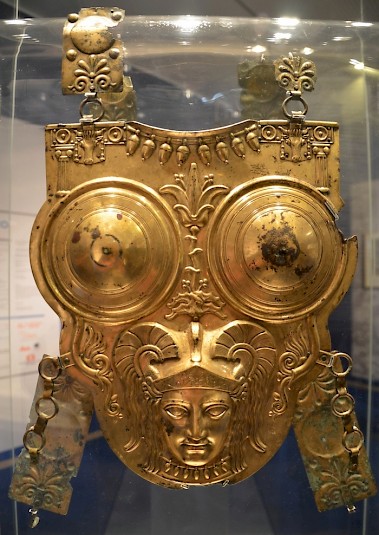Phameas
Phameas: Carthaginian cavalry officer during the Third Punic War.

In the third century BCE, Rome and Carthage had fought two major wars, in which the Romans had conquered the provinces of the Carthaginian Empire: Sicily, Sardinia and Corsica, the territories on the Iberian Peninsula. Carthage itself, however, prospered and the Romans, fearing that its possible power, decided to root out the danger. In 149 BCE, the Third Punic War broke out, which ended with the sack of Carthage.
The main source was Polybius of Megalopolis' World History, books 37-38, which have come down to us fragmentarily. The part about the fall of Carthage, however, is quoted by is by later historians like Appian of Alexandria (Punic Wars, chapters 74-135) and Cassius Dio (Roman History, book 21).
One of the Carthaginian officers who is called Hamilcar or Phameas. Polybius introduces him as "in the prime of life, of great personal vigor, and - what is most important in a soldier - a good and bold rider"note Appian, probably using information from a lost part of Polybius, calls "the chief of the African horse" a man who was "eager for fighting" and had "small but swift horses that lived on grass when they could find nothing else, and could bear both hunger and thirst when necessary".note
He is mentioned for the first time in the year 149 BCE, after the consuls Lucius Marcius Censorinus and Manius Manilius had laid siege to Carthage and sent out soldiers to gather wood for siege engines. On several occasions, Phameas attacked the Romans when he saw that they were not on their guard and he inflicted much damage.note However, he never attacked any party under command of Scipio Aemilianus, who kept his men close together and protected them with cavalry. This led to a rumor that Phameas and Scipio had an understanding, based on the fact that the Scipiones had a network of clients in the region.note Soon, this rumor would become reality.
The siege of Carthage was interrupted by a Roman attack on a Carthaginian stronghold named Nepheris, which was defended by Hasdrubal. This expedition, led by Manilius, ended in failure. When the Romans returned to their camps near Carthage,
Phameas made an attack upon them while demoralized by that disaster, and as they came into camp the Carthaginians made a sally from the city and killed some of the camp followers.note
It was only after the winter of 149/148 that the Romans found a way to counterattack. Some Numidians, led by Gulussa, had allied themselves to the Romans. They successfully sought out Phameas' hiding places and attacked him over there, putting an end to his raids.note Not much later, Scipio and Phameas chanced to meet. Appian tells:
One wintry day Scipio and Phameas found themselves on the opposite sides of an impassable stream, where neither could do any harm to the other. Scipio, fearing lest there might be an ambuscade farther on, advanced with three companies to reconnoiter. Phameas, observing this movement, advanced with only one companion. Scipio, anticipating that Phameas wanted to say something to him, advanced further with only one.
When they had come near enough to hear each other and were at a sufficient distance from the Carthaginians, Scipio said, "Why do you not look out for your own safety since you cannot do anything for your country?"
The other replied, "What chance is there for my safety when the affairs of Carthage are in such straits and the Romans have suffered so much at my hands?"
"If you have any confidence in my word and influence," said Scipio, "I will promise you safety and pardon from the Romans and their favor besides."
Phameas praised Scipio as the most trustworthy of men, and replied, "I will think of it, and if I find that it can be done I will let you know." Then they separated.note
After a second Roman expedition to Nepheris, led by Manilius again, who had just as little success as during his first attack, Phameas decided to come over to the Romans. Some of his officers went over to their former enemy as well, together with no less than 2,200 horse. The remainder of Phameas' forces, which remained loyal to Carthage, were held together by Hanno, surnamed the White.note The rumor had become true.
During the Roman retreat from Nepheris, Phameas and Gulussa protected the army against attacks from Hanno and Hasdrubal.note In the spring of 148 BCE, consul Manilius was succeeded by Calpurnius Piso, and Phameas was sent to Rome as companion of Scipio. The Carthaginian officer was received with all honors in the Senate, which awarded him...
a purple robe with gold clasps, a horse with gold trappings, a complete suit of armor, and 10,000 drachmas of silver money, ... 100 minas of silver plate and a tent completely furnished.
The senators promised him even more if he would continue to cooperate. Appian states that Phameas accepted this proposal and joined the Romans near Carthage. However, it has not been recorded what happened after this.note